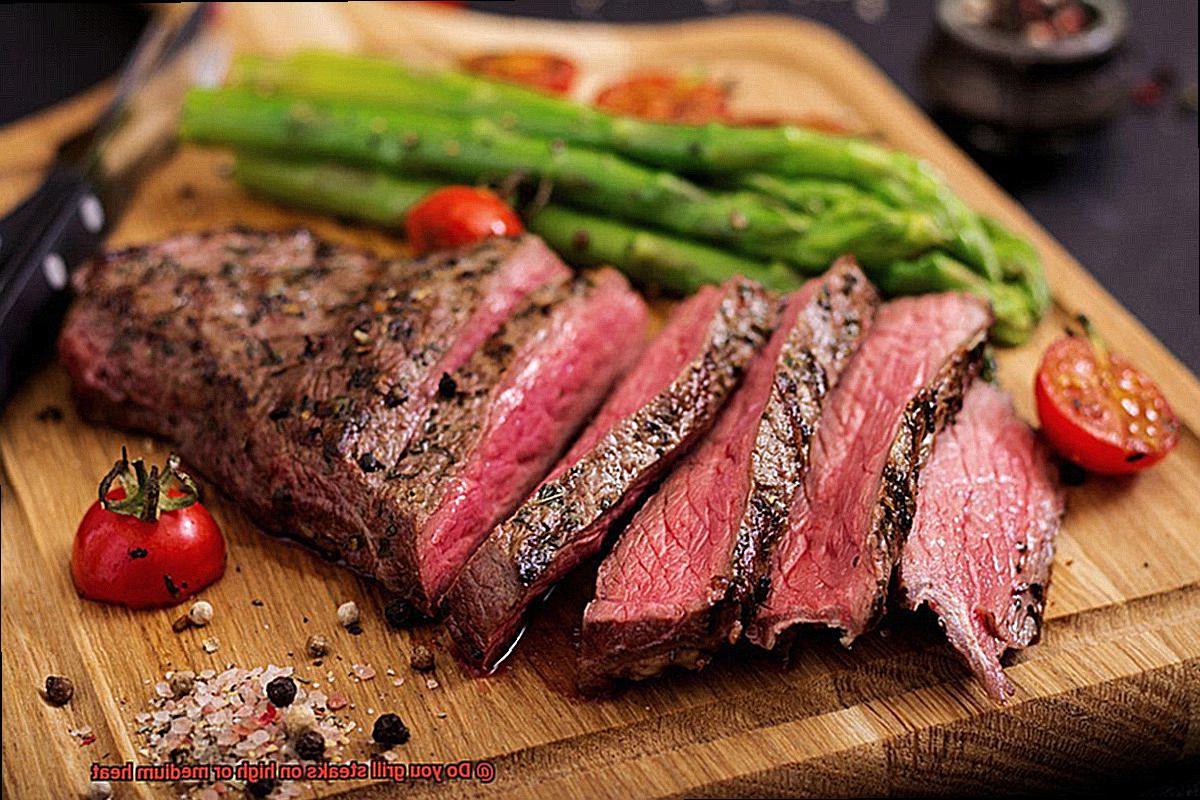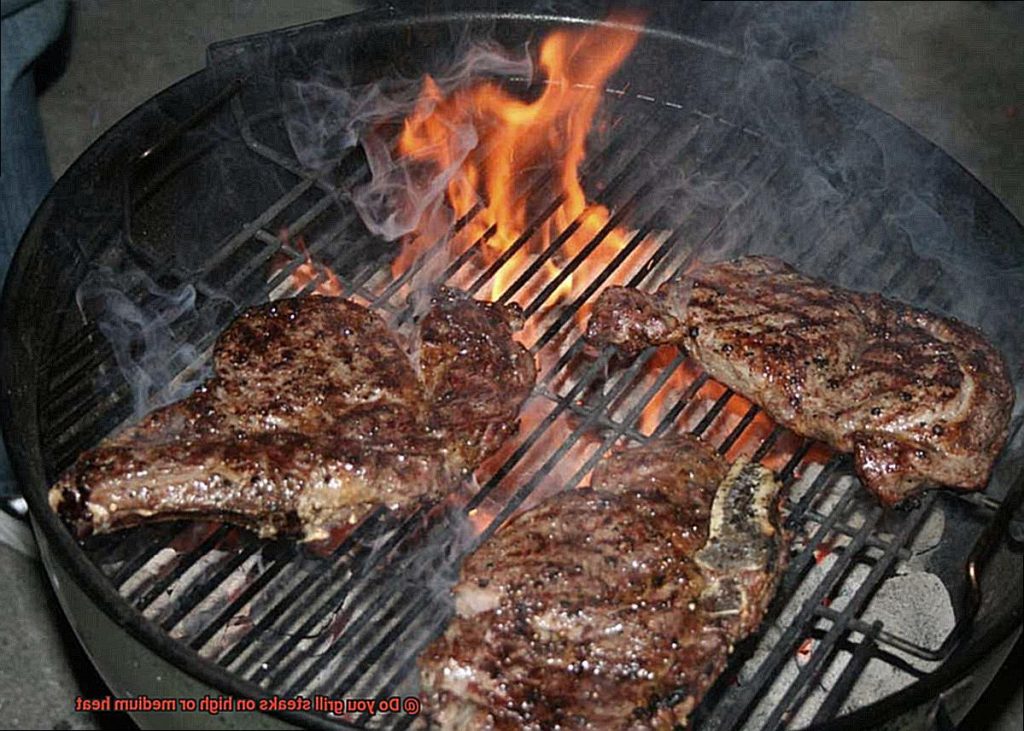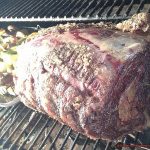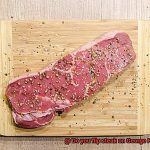Grilling the perfect steak is an art form that requires precision, patience, and a keen sense of taste. Nothing beats the tantalizing aroma of a juicy steak sizzling on the grill, but how do you get it just right? One of the most common questions when it comes to grilling steaks is whether to use high or medium heat. The answer may seem simple, but there’s more to it than meets the eye.
The thickness of your steak is a crucial factor in determining the ideal cooking temperature. A thinner cut may benefit from higher heat, while a thicker cut requires a lower temperature to ensure even cooking. Additionally, different cuts have varying fat content and tenderness levels, which can impact their optimal cooking temperature.
Personal preference also plays a role in determining how your steak should be cooked. Do you like your steak rare, medium-rare, or well-done? The cooking temperature can significantly affect the final result and taste of your steak.
In this blog post, we’ll explore the question of whether to grill steaks on high or medium heat in-depth. We’ll cover all the factors you need to consider for perfect grilling every time. From ideal temperatures for various cuts of meat to tips for achieving your desired level of doneness – we’ve got you covered. So sit back, relax and let’s get grilling.
Contents
What is the Difference Between High and Medium Heat?
Grilling the perfect steak requires mastering the art of heat. High and medium heat are common temperature settings for grilling steaks, but what’s the difference? Let’s explore the nuances of high and medium heat and how they can affect the outcome of your steak.
High Heat: The Perfect Sear
For a quick and crispy sear, high heat is the way to go. Typically ranging from 450-500°F, high heat is perfect for thinner cuts of steak. Preheat your grill for at least 10-15 minutes to achieve this temperature. The high heat quickly cooks the outside of the steak while keeping the inside juicy and tender. This creates a delicious crust on the outside while ensuring that the inside of the steak remains perfectly cooked.
Medium Heat: Even Cook Throughout
Thicker cuts of steak require a more gentle approach with medium heat. Typically ranging from 350-375°F, medium heat allows for an even cook throughout the steak without charring too much on the outside. This temperature also gives you more control over the final temperature of the steak, which is essential if you’re aiming for a specific level of doneness.
Factors to Consider
While high and medium heat have their advantages, there are other factors to consider when grilling steaks. For example, if you’re cooking a particularly fatty cut of steak, lower heat may be necessary to prevent flare-ups from the fat dripping onto the flames. Additionally, some grillers prefer to start with high heat to get a good sear on both sides of the steak and then finish cooking it on lower heat.
Doneness Levels
It’s important to note that different levels of doneness require different temperatures. For example, a rare steak requires an internal temperature of 130-135°F, while a medium-rare steak needs an internal temperature of 135-145°F. Medium steaks require an internal temperature of 145-155°F, and well-done steaks need an internal temperature of 160°F or higher.
When to Use High Heat for Grilling Steaks
One of the most debated topics when it comes to grilling steaks is whether to use high heat or medium heat. As an expert on this topic, I’m here to break it down for you.
High heat is often preferred by many grill masters because it can create a delicious crust on the outside of the steak while locking in all those juicy flavors on the inside. This method is especially effective for leaner cuts of steak, such as sirloin or flank, as it helps to prevent them from becoming tough and dry.
However, before you start cranking up the heat, it’s crucial to consider the type of steak you’re working with. Thicker or fattier cuts of steak, such as ribeye or filet mignon, may benefit from being cooked on medium heat to ensure that they cook evenly throughout without burning on the outside.
Moreover, some grillers prefer to use a combination of high and medium heat. This method involves starting with high heat to sear the steak and then lowering the temperature to finish cooking it through. It can work wonders for achieving that perfect char while still keeping the inside juicy and flavorful.
Another crucial factor in deciding whether to use high or medium heat is the desired level of doneness. If you prefer your steaks well-done, then using medium heat may be the better option to prevent burning on the outside while still cooking the inside thoroughly. However, if you want a rare or medium-rare steak, then high heat may be the better option for achieving that perfect char while still keeping the inside juicy and flavorful.
To summarize, when it comes to grilling steaks, there’s no one-size-fits-all approach. The decision of when to use high or medium heat will depend on various factors such as the cut of steak, desired level of doneness, and personal preference.
Here are some additional tips to help you grill the perfect steak:
- Let your steak rest at room temperature for 30 minutes before grilling to ensure even cooking.
- Season your steak generously with salt and pepper before grilling for maximum flavor.
- Use a meat thermometer to check the internal temperature of your steak to ensure it’s cooked to your desired level of doneness.
- Allow your steak to rest for 5-10 minutes after grilling to allow the juices to redistribute and prevent them from spilling out when you cut into it.
When to Use Medium Heat for Grilling Steaks

As an expert on grilling steaks, I’m here to share some insights on when to use medium heat for those mouth-watering cuts of meat.
First and foremost, let’s talk about thicker cuts of steak. High heat may seem like the way to go, but it can actually be your worst enemy in this scenario. The outside of the steak will cook too quickly, leaving the inside undercooked. Avoid this disaster by opting for medium heat instead. This way, you’ll ensure that your steak cooks evenly and reaches the desired level of doneness without burning or drying out.
Another situation where medium heat reigns supreme is with fatty cuts of steak. If you’re cooking a steak with lots of marbling or fat, high heat can cause the fat to render too quickly, leading to flare-ups that can potentially burn your steak. Cooking on medium heat allows the fat to slowly render and infuse the steak with flavor without risking a fiery disaster.
But what about bone-in steaks? Bones can act as insulators and make it difficult for heat to penetrate the meat and cook it evenly. Using medium heat gives your steak more time to cook through without burning the outside.
Of course, high heat has its place too. For thinner cuts like flank or skirt steak, high heat can create a crusty exterior while keeping the inside tender and juicy. And if you’re looking for that coveted sear for presentation purposes, high heat is key.
The decision of whether to use high or medium heat ultimately depends on factors such as the cut of meat, its thickness, and your personal preferences. Experiment with different heat levels to find that perfect balance for grilling steaks that are juicy, flavorful, and perfectly cooked every time.
Other Factors to Consider When Grilling Steaks
Grilling the perfect steak is an art that requires more than just setting your grill to the right temperature. There are other factors to consider that can make all the difference in achieving that juicy, flavorful steak that everyone craves.
First and foremost is the cut of meat. Each type of steak requires a specific grilling temperature and time to achieve its best flavor and texture. Tougher cuts like flank or skirt steak need high heat for a shorter time to break down the muscle fibers and make them tender. More tender cuts like filet mignon or ribeye, on the other hand, can be cooked at medium heat for a longer period without sacrificing their tenderness.
The thickness of your steak is another crucial factor to consider. Thicker steaks require lower heat for a longer cooking time to ensure that the inside is cooked thoroughly without burning the outside. On the other hand, thinner steaks need high heat for a short amount of time to create that crispy exterior while still maintaining a juicy interior.
Lastly, your desired level of doneness is essential when grilling steaks. If you prefer your steak rare, then high heat for a quick sear is ideal, while medium heat for a more extended period is necessary if you prefer well-done steaks.
Tips for Achieving Perfectly Cooked Steak Every Time
Grilling the perfect steak can be a challenging task, but with the right tips and techniques, it can be achieved every time. Here are five sub-sections that provide insight into how to achieve perfectly cooked steak every time.
Temperature Matters
One of the most important factors in cooking steak is ensuring the temperature is right. The ideal temperature for grilling steak depends on the cut and thickness of the meat. A thicker cut requires lower heat and a longer cooking time to ensure that the inside is cooked without burning the outside. In contrast, a thinner cut needs higher heat to sear the outside while keeping the inside juicy and tender.
Start with Room Temperature Meat
Before cooking your steak, let it sit at room temperature for at least 30 minutes. The reason being that when meat is cooked directly from the refrigerator, the outside tends to cook faster than the inside, making it tough and chewy. By letting it sit at room temperature, it allows for more even cooking and ensures a juicy and tender steak.
Season Your Steak
Seasoning your steak with salt and pepper before grilling adds flavor and helps to form a crust when grilled. However, be careful not to over-season your steak as it can overpower its natural flavor.
Rest Your Steak
After grilling your steak, let it rest for a few minutes before slicing into it. This allows the juices to redistribute throughout the meat, making it more flavorful and tender. If you cut into your steak immediately after grilling, the juices will run out, resulting in a dry and tough piece of meat.
Use a Meat Thermometer
Using a meat thermometer is an essential tool in ensuring that your steak is cooked to perfection every time. It eliminates any guesswork and ensures that you cook your steak according to your desired doneness. A rare steak should have an internal temperature of 125°F, medium-rare should be 130°F, medium should be 135°F, medium-well should be 145°F, and well-done should be 160°F.
The Best Approach for Grilling Steaks Based on Your Preferences
Grilling the perfect steak is a culinary art that requires careful consideration and experimentation. As an expert in the field, I am here to share with you the best approach for grilling steaks based on your personal preferences.
One of the most critical factors to consider when grilling steaks is the heat level. Do you like your steak crispy on the outside and juicy on the inside, or do you prefer a more even cook throughout? The answer to this question will determine the heat level that you should use.
For those who crave a crispy exterior and a succulent interior, high heat is the way to go. This method is ideal for thinner cuts of steak, such as flank or skirt steak. High heat quickly sears the outside of the meat, creating a flavorful crust while trapping in all the natural juices.
However, if you prefer a more evenly cooked steak with consistent texture throughout, then grilling on medium heat may be more to your liking. This method is perfect for thicker cuts of steak like ribeye or filet mignon. Cooking on medium heat allows for a slower cook, resulting in a more tender and evenly cooked steak.
In addition to heat level, other factors such as grill type and desired level of doneness also play an important role in achieving the perfect cook. Gas and charcoal grills affect both flavor and cooking time, so it’s essential to choose the right one for your desired outcome. Additionally, different levels of doneness require varying cooking times and temperatures.
To get the perfect grill marks and flavor profile that satisfies your taste buds, experimentation is key. Try out different heat levels and cooking times until you find your sweet spot.
How to Control the Final Temperature of a Steak
Grilling a steak is an art form, and controlling the final temperature is key to achieving the perfect level of doneness. It’s important to keep in mind that high heat is necessary for creating a flavorful crust on the outside of the steak.
However, cooking a steak on high heat alone can result in a steak that is overcooked on the outside and undercooked on the inside. Here are five sub-sections that will help you understand how to control the final temperature of your steak for different levels of doneness:
- The Importance of High Heat: To create a delicious crust on the outside of your steak, high heat is essential. Sear both sides of your steak for 1-2 minutes per side.
- Reduce the Heat: After searing, reduce the heat to medium or low, depending on the thickness of your steak. This will prevent overcooking on the outside and ensure even cooking throughout.
- Using a Meat Thermometer: To achieve perfection, use a meat thermometer to monitor the internal temperature of your steak. For rare steaks, aim for an internal temperature of 125°F-130°F. For medium-rare steaks, aim for 130°F-135°F. For medium steaks, aim for 135°F-145°F. And for well-done steaks, aim for 155°F-160°F.
- The Importance of Resting: After cooking your steak, let it rest for a few minutes before slicing. This allows the juices to redistribute throughout the meat, resulting in a tender and juicy steak.
- Practice Makes Perfect: Every grill is different, so it’s important to experiment and practice to find the perfect balance of heat and timing for your grill and personal preferences.
How to Prevent Flare-Ups from Fat Dripping onto the Flames
Grilling steaks can be a challenging task, especially when fat drips onto the flames and causes flare-ups. Fortunately, there are some easy ways to prevent this issue and enjoy perfectly cooked steaks every time. Here are five tips to prevent flare-ups from fat dripping onto the flames when grilling steaks.
Start with a Clean Grill
The first step to preventing flare-ups is to start with a clean grill. Any leftover grease or food debris on the grates can increase the risk of flare-ups. So, before grilling your steaks, take a few minutes to brush the grates with a grill brush to remove any residue.
Trim Excess Fat from Your Steaks
While fat is essential for adding flavor and tenderness to your meat, too much fat can cause excessive dripping and increase the risk of flare-ups. Use a sharp knife to trim any visible fat from your steaks before placing them on the grill. This will reduce the amount of fat that drips onto the flames and cause flare-ups.
Choose the Right Heat Setting
The heat setting is crucial for preventing flare-ups when grilling steaks. While high heat might seem like the best option for cooking steaks quickly, it can also increase the risk of flare-ups. Instead, aim for medium-high heat and adjust the temperature as needed throughout the cooking process to maintain a consistent temperature.
Create a Two-Zone Fire
Creating a two-zone fire on your grill can also help prevent flare-ups. This means that you have one side of the grill set to high heat while the other side is set to medium or low heat. Place your steaks on the high heat side initially for a few minutes to sear them. Then, move them over to the cooler side of the grill to finish cooking them through without causing any flare-ups.
Use a Drip Pan or Tray
Using a drip pan or tray underneath your grill grates can catch any excess fat that drips off your steaks. This will not only prevent flare-ups but also make cleanup easier. Additionally, you can use a pair of tongs to hold the steak over the flames and let any excess fat drip off before placing it back on the grill.
l9AKsuGeQ2k” >
Conclusion
In conclusion, the debate over whether to grill steaks on high or medium heat ultimately comes down to personal preference and the cut of steak being cooked.
While high heat may be ideal for thinner cuts like flank or skirt steak, thicker cuts like ribeye or filet mignon may benefit from a slower, more controlled cooking temperature. Ultimately, the key is to achieve a perfectly cooked steak with a juicy interior and crispy exterior.
So experiment with different heat levels and techniques until you find what works best for you.






